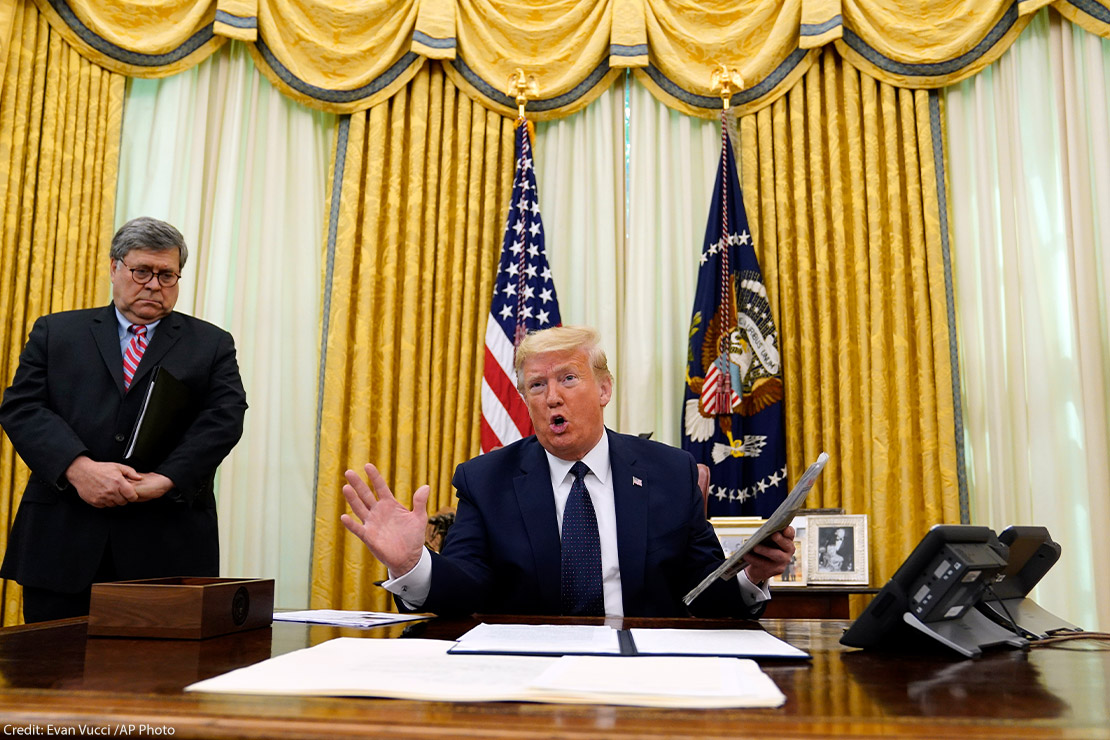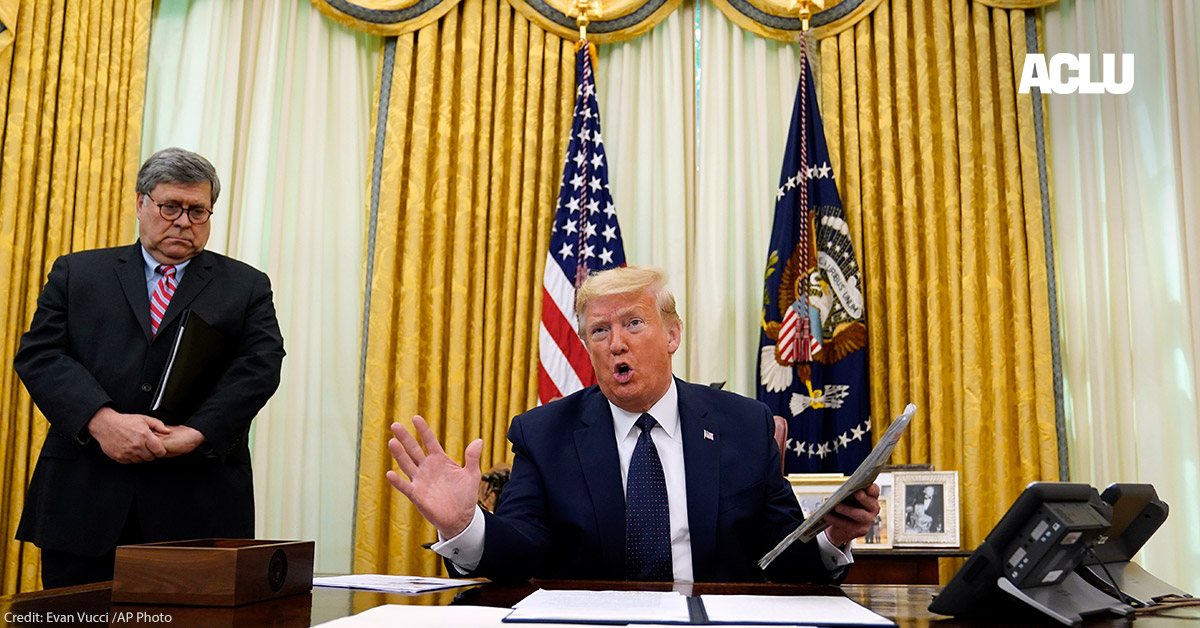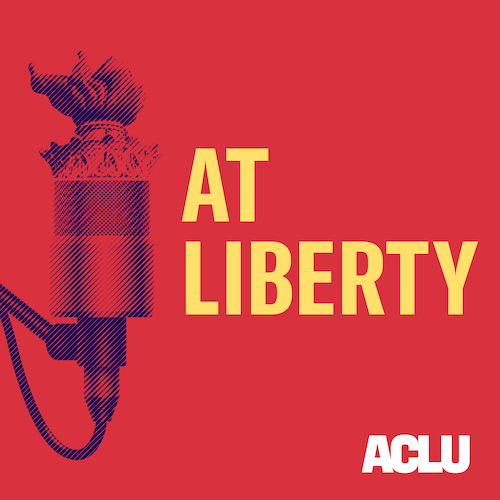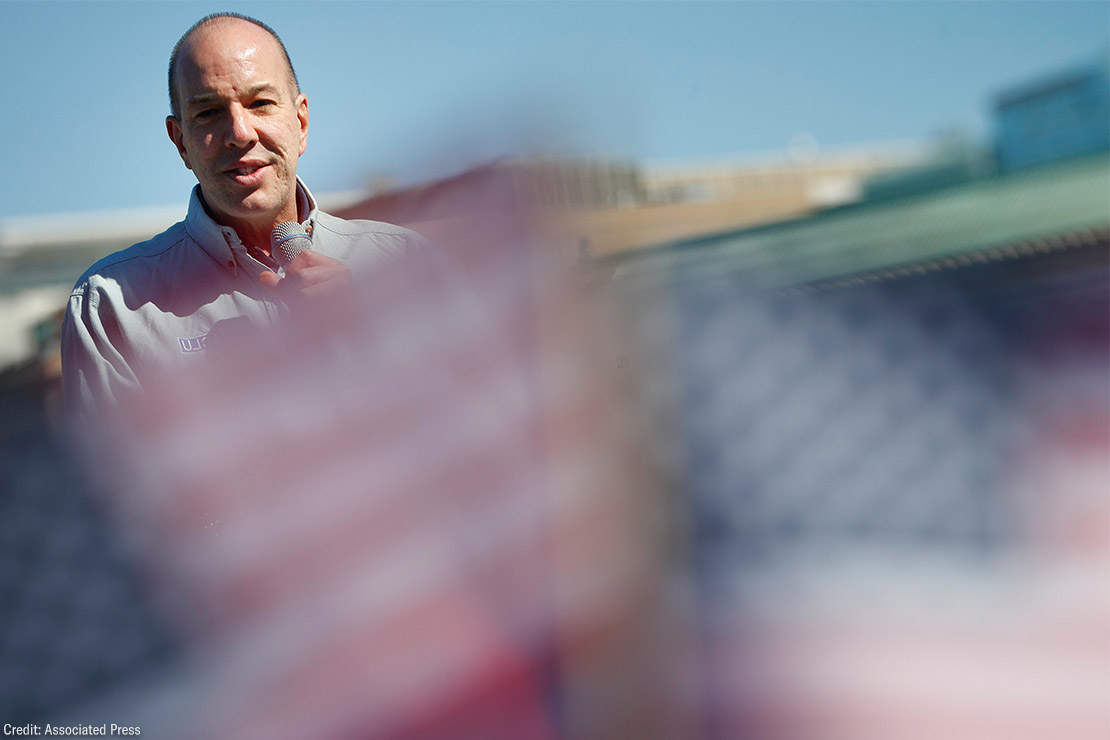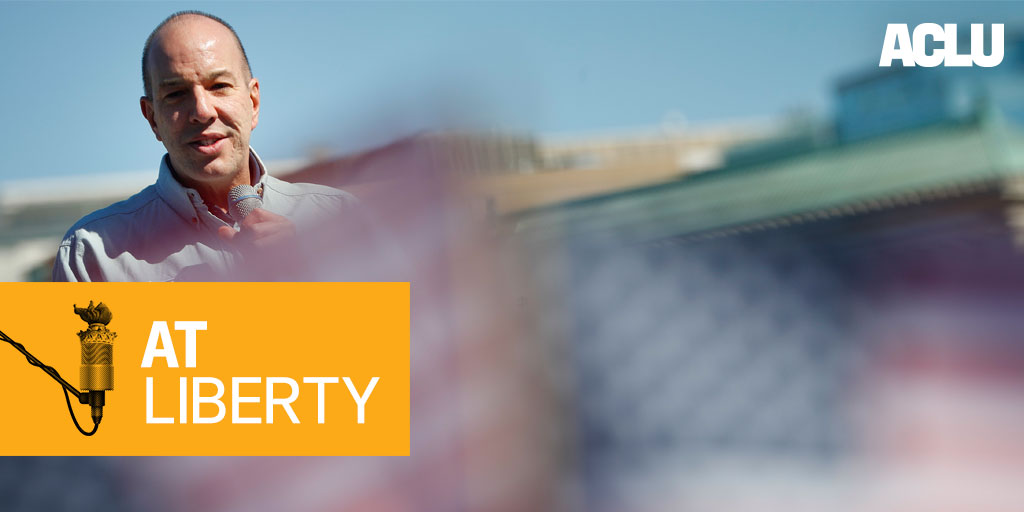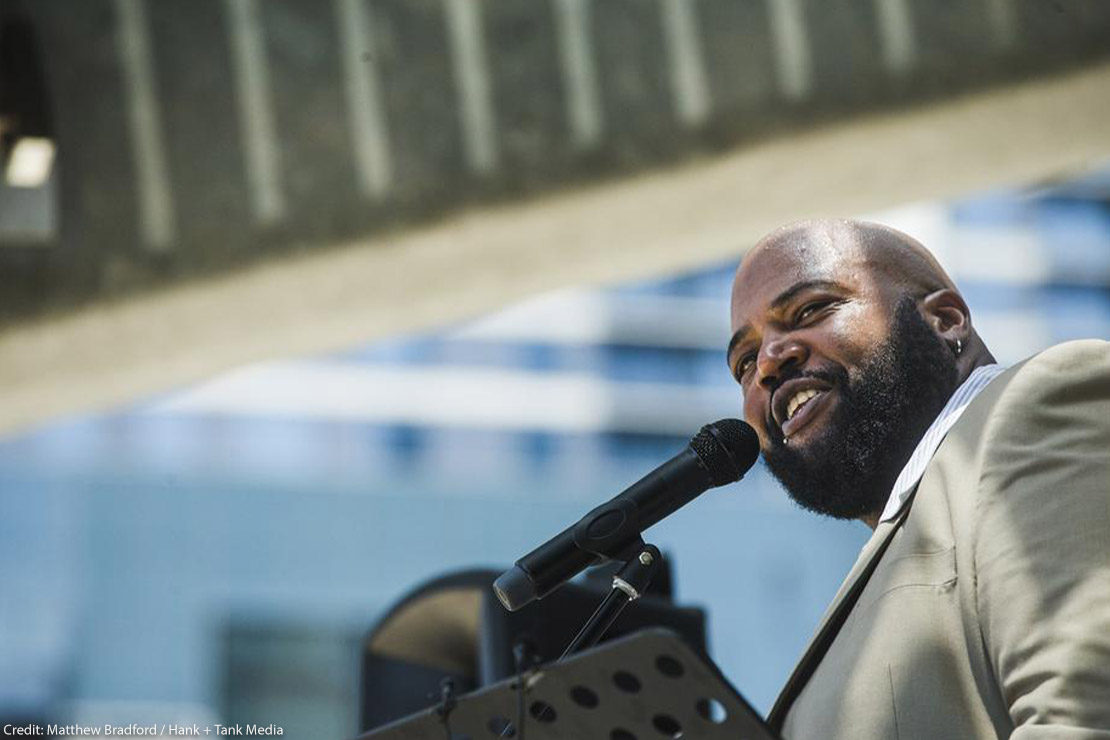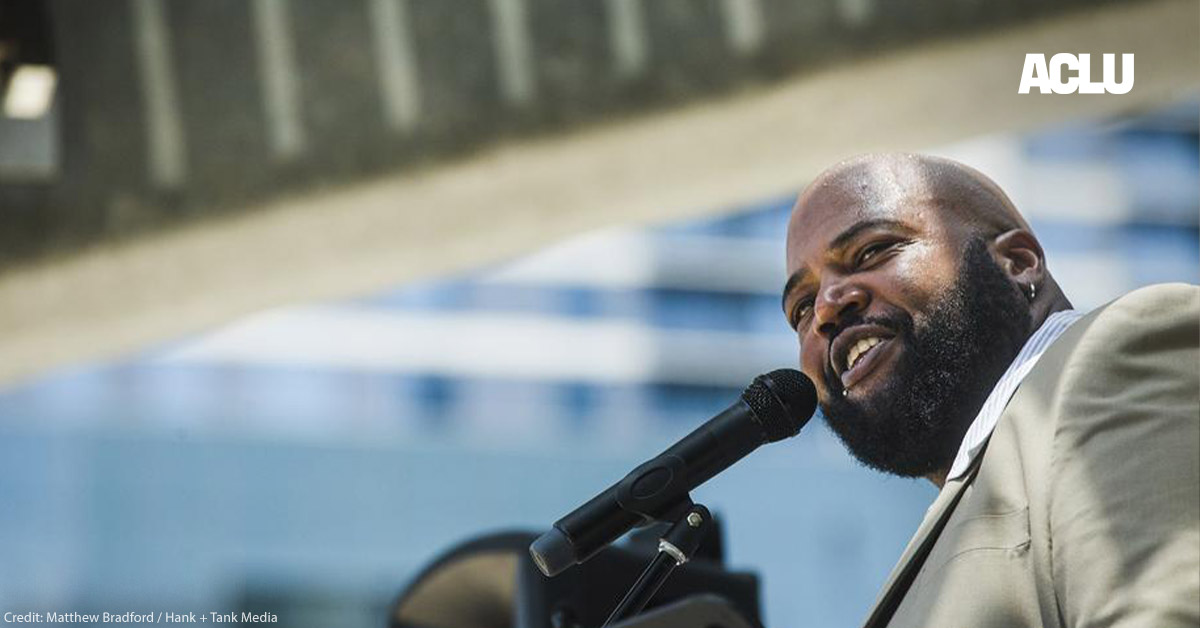Yesterday, President Trump signed an executive order aimed at bullying social media companies and online platforms into changing how they moderate content online. The order came the day after President Trump tweeted that Republicans feel that social media platforms silence conservative voices. And, notably, just days after Twitter’s decision to place a fact-checking label on one of Trump’s tweets for the first time, calling out his blatantly false tweets about mail-in ballots and directing users to trusted journalistic sources countering the President’s lies.
There is one part of the executive order we agree with. Its opening section identifies how online speech has become a central feature in public dialogue, and raises concerns about the monopoly power of a handful of private companies to control such an important forum for debate. We agree that Twitter and Facebook should be careful about their own content decisions, because they affect all of us. But that’s where our agreement ends. The remedy President Trump proposes in the rest of the Executive Order is far worse than the problem it identifies. In the name of free speech, it threatens official retaliation for speech that displeases the government.
Let’s start with the Constitution, which prohibits retaliation for protected speech. Trump is telling Twitter, Facebook, and other platforms, “If you speak out in ways that displease me,” for example, calling out his lies, condemning his views, or adding context to his distortions, “I will make things much harder for you.” The First Amendment forbids such blatant, thin-skinned efforts to stifle expression — whether they are effected through formal or informal means. In the short term, such threats chill free expression, and are impermissible for that reason.
At the same time, the extent of the order’s long-term effects remain unclear. The President has no more authority to amend an act of Congress or a provision of the Constitution than he does to silence those, including Twitter, who condemn his views and his policies. He can’t constitutionally do any of these things on his own, yet the order appears to attempt to do all three.
It directs the Commerce Department to ask the FCC to make a rule adopting the President’s interpretation of an important shield from liability for online platforms known as Section 230 of the Communications Decency Act (CDA 230). The FCC has no obligation to take up the request, and, even if it did, no authority to interpret CDA 230 in the ways the order suggest because they are contrary to the law’s clear language. However, that doesn’t mean it won’t try.
Other provisions, including a threat to withhold government contracts and advertising from online platforms whose speech decisions about what to post, not post, or comment on, level a direct threat of retaliation for protected private speech. And given the government’s substantial resources, that threat cannot be considered idle. It also cannot be considered constitutional.
That brings us to one of the biggest problems with the executive order. It blames CDA 230 for online censorship, which entirely misconstrues the function and purpose of that statute. This fundamental misapprehension appears to be shared by many members of Congress, as well. In fact, Section 230 is critical to protecting free speech online, and threats to undermine it will undermine free expression.
By generally immunizing platforms from liability for the speech of their users, CDA 230 allows platforms to publish all sorts of content without having to calculate the legal risk presented if it were their own content, creating space for free communications and debate. That includes — as Donald Trump appears to have forgotten — his own tweets, even when they include lies.
It also includes the videos, photos, and tutorials each of us is relying on to stay connected today. If it weren’t for CDA 230, no website owner would permit public posts knowing that the site could be investigated, shut down, sued, or charged with a felony over one user’s illegal tweet or post — including that of the President. Without this protection, even the smallest blog would have to hire an army of lawyers to assess in real-time all content created and uploaded by users. It’s unaffordable, and unrealistic. Instead, sites would avoid legal liability by simply refusing to host user-generated content at all, effectively shutting down the platforms we have come to depend on for public discourse.
In fact, this is exactly what has happened in the past when Congress has amended CDA 230. SESTA/FOSTA, which the ACLU strongly opposed, was purportedly aimed only at creating platform liability for illegal sex trafficking. We warned at the time that, rather than face liability, platforms would engage in excessive censorship that would harm the LGTBTQ and sex worker communities in particular. As we predicted, after SESTA/FOSTA’s passage, entire web sites that provided forums for sex workers to connect, share information to protect themselves, and build community disappeared. Google and other remote storage sites began to scan for sex-related content and remove it from their systems, censoring legal content only to avoid liability risk. Speech and safety both suffered.
The changes the President seems to want, which would strip online platforms of CDA Section 230’s protections if they fact-check his statements on their platforms, or are deemed “biased” from the standpoint of a particular administration, could have the paradoxical effect of silencing even the President himself online. Without CDA 230 protections, those platforms would not expose themselves to the legal risk of hosting the President’s content — or anyone else’s.
Changes proposed by certain members of Congress, like Senator Lindsey Graham, would harm our online speech rights in different ways. For instance, the changes to CDA 230 proposed by Sen. Graham’s EARN IT Act, which the ACLU also strongly opposes, would not only harm our online speech rights, but also undermine our privacy online, again in ways that will disproportionately harm the LGBTQ and sex worker communities. Any changes to narrow CDA 230’s protections must be far more carefully considered.
CDA 230 protects people’s ability to create, communicate, and build community online. The ACLU will remain vigilant in ensuring that the Internet remains a place for self-expression and creation for all. We also urge vigilance on the part of members of Congress to protect free expression online as they examine CDA 230. And we will be monitoring closely to see how federal agencies choose to enforce President Trump’s executive order, if at all.
Kate Ruane, Senior Legislative Counsel, ACLU
Date
Friday, May 29, 2020 - 6:15pmFeatured image
